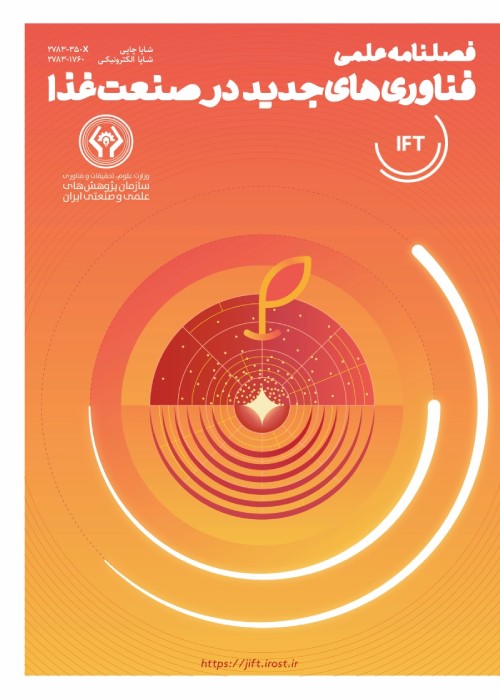Optimization and comparative evaluation of ultrasound-assisted extraction of bioactive phenolic compounds from feijoa (Feijoa sellowiana) leaves
Author(s):
Article Type:
Research/Original Article (دارای رتبه معتبر)
Abstract:
In this study, the effect of ultrasound-assisted extraction (UAE) process independent variables including ultrasonic intensity (714.00, 1425.50 and 2143.00 w cm-2), duty cycle (50, 75 and 100%) and extraction temperature (30, 45 and 60 °C) on feijoa leaves bioactive phenolic compounds was investigated and optimized using response surface methodology based on Box-Behnken design. The total phenolic content of extracts was measured using Folin- Ciocalteu method. Quadratic polynomial model was obtained for total phenolic compounds using multiple linear regression analysis. The optimal conditions were determined as 1749.34 W cm-2 ultrasonic intensity, 86.39% duty cycle and 32.49 °C extraction temperature. The radical scavenging activity of phenolic compounds obtained under optimized UAE conditions was assessed using 2,2-diphenyl-1-picrylhydrazyl (DPPH) and 2,2´-Azinobis (3-ethylbenzothiazoline-6-sulphonic acid) diammonium salt (ABTS) radical scavenging activity methods. Based on results obtained, the total phenolic compound and radical scavenging activity of extract obtained under optimal conditions were 381.20 ± 0.12 mg GAE/g, 81.43 ± 0.10% of DPPH radical inhibition and 86.63 ± 0.26% of ABTS radical inhibition, respectively. The model obtained for prediction of dependent variable has a good closeness with experimental results. The agitated bed extraction technique was investigated to carry out the comparative evaluation. The effect of agitation intensity (50-300 rpm) on total phenolic content of extracts obtained using this technique was studied. Based on results obtained, the highest value of total phenolic content (352.95 ± 0.12 mg GAE/g) could be achieved using 200 rpm agitation intensity. The radical scavenging activity of extract was 73.33 ± 0.16% of DPPH radical inhibition and 82.20 ± 0.12% of ABTS radical inhibition. According to the results obtained it could be stated that ultrasound-assisted extraction is a promising technique to obtain extracts contain more phenolic compounds and higher radical scavenging activity during short extraction time.
Keywords:
Language:
Persian
Published:
Journal of Innovative Food Technologies, Volume:5 Issue: 1, 2018
Pages:
49 to 64
magiran.com/p1784553
دانلود و مطالعه متن این مقاله با یکی از روشهای زیر امکان پذیر است:
اشتراک شخصی
با عضویت و پرداخت آنلاین حق اشتراک یکساله به مبلغ 1,390,000ريال میتوانید 70 عنوان مطلب دانلود کنید!
اشتراک سازمانی
به کتابخانه دانشگاه یا محل کار خود پیشنهاد کنید تا اشتراک سازمانی این پایگاه را برای دسترسی نامحدود همه کاربران به متن مطالب تهیه نمایند!
توجه!
- حق عضویت دریافتی صرف حمایت از نشریات عضو و نگهداری، تکمیل و توسعه مگیران میشود.
- پرداخت حق اشتراک و دانلود مقالات اجازه بازنشر آن در سایر رسانههای چاپی و دیجیتال را به کاربر نمیدهد.
In order to view content subscription is required
Personal subscription
Subscribe magiran.com for 70 € euros via PayPal and download 70 articles during a year.
Organization subscription
Please contact us to subscribe your university or library for unlimited access!



